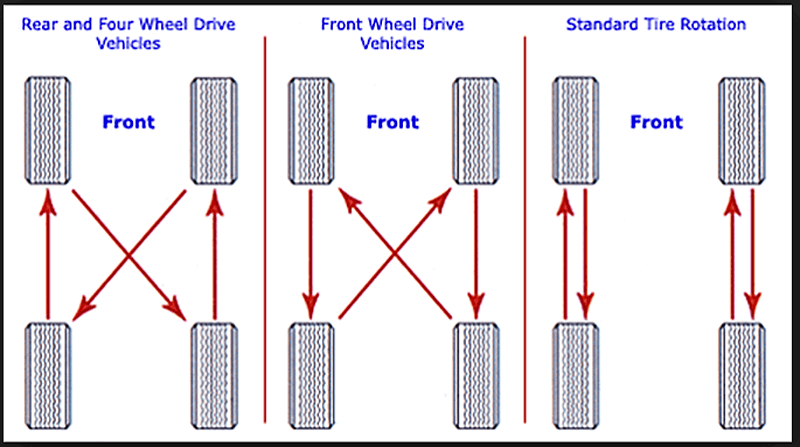Home > Company > Tire Safety > Maintaining Tires > Tire Rotation
Even if your car is properly aligned, tires still need to be rotated for optimal wear performance and maintenance. Rotation counteracts the uneven wear characteristics of each wheel position on the vehicle. How often should you do it? To maximize tire tread life, follow the recommended rotation schedule in your vehicle owners manual. If there is not a recommendation from the vehicle manufacturer, then rotate your tires every 5,000 to 7,000 miles by taking your car to a trusted tire dealer or automotive service center.
If your car's wheels are out of alignment, your tires will wear unevenly, which can lead to early tire replacement. Also, a car out of alignment could signal other mechanical problems that may affect tire performance. For the best results, choose a shop that uses accurate computer-assisted machines, and ask for a printout of the adjustment angles to keep with your service records.
Tires and wheels that are out of balance don't just cause annoying vibration. Uneven tread wear may also result, further reducing your ride comfort and leading to earlier tire replacement. A shop with an electronic spin balancer can help smooth things out.
Front-wheel drive vehicles place braking, steering and driving forces on the front axle tires. Rear axle tires receive primarily braking forces, resulting in a much faster wear rate for the front axle tires.
The "Modified Cross Pattern" can be performed on any front- or rear-wheel drive vehicle equipped with four non-directional tires (directional tires must be rotated front to rear only).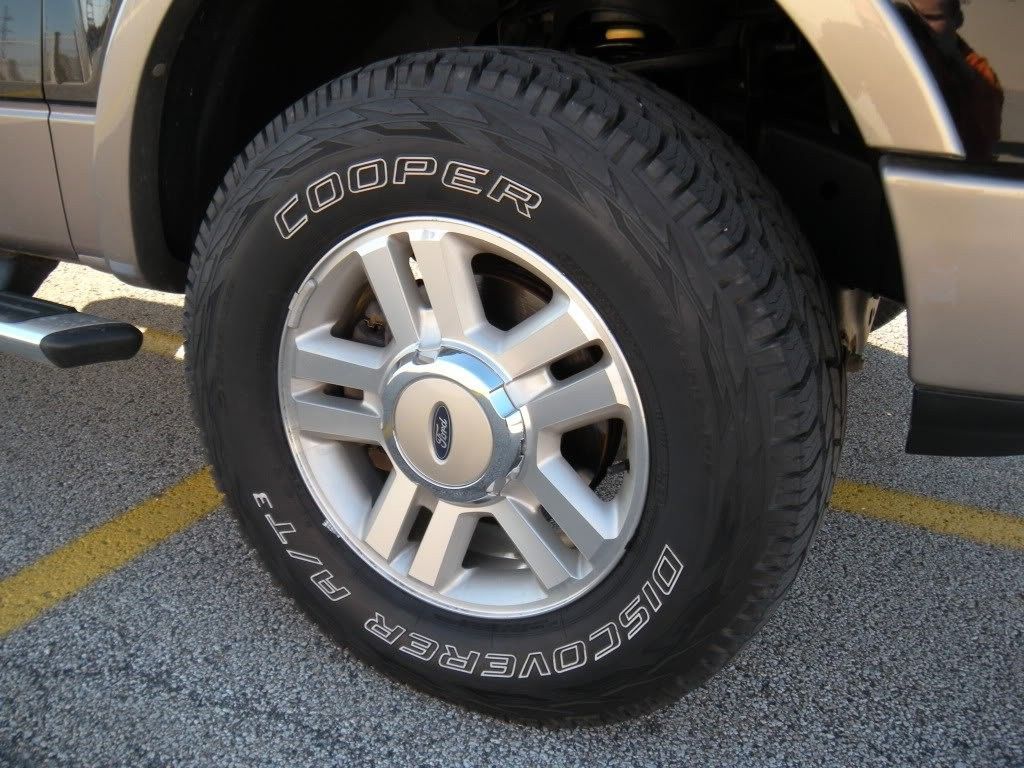 Free rolling axle tires are crossed and installed to the drive axle, while the drive axle tires are brought straight to the free rolling axle (without crossing). Just remember, “cross to drive”.
Free rolling axle tires are crossed and installed to the drive axle, while the drive axle tires are brought straight to the free rolling axle (without crossing). Just remember, “cross to drive”.
Directional treads are designed to perform in the direction denoted on the tire sidewall only. They must always be rotated front to rear — no matter the vehicle they are installed on — so the direction of the rotation does not change.
Watch our Tread Life video to see more rotation patterns.
Notes:
Following rotation, adjust all tires to the vehicle manufacturer’s recommended inflation pressures. Always torque lug nuts or lug bolts to manufacturer’s recommended specification.
Vehicles equipped with permanent four-wheel drive and those with "on command" four-wheel drive and driven mainly in four-wheel drive mode are best suited to a four-tire cross rotation. With this pattern, tires from both axles are crossed and installed on the opposing axle.
Straight rotation was developed in the early years of radial tires. This rotation method switches the tires front-to-rear but does not cross side to side. This rotation method is used for directional tread patterns.
If your spare tire is a matching full size tire (as opposed to a temporary spare) and you want to keep it in rotation, move the spare to the right rear position. Then place the tire that would have gone to the right rear in the spare position.
If your vehicle has dual rear wheels the rotation pattern looks like two triangles, one on the driver’s side and one on the passenger’s side. For each side, move the outer dual tire to the inner position, the inner dual tire to the steer position and the steer tire to the outer dual position.
Never include a temporary spare tire in the rotation.
Directional tread patterns must be rotated front-to-rear only so the direction of the rotation does not change.
Learn about our mission, our achievements, and our ongoing commitments
Read Our Origin Story
With this unstable economy, we are all looking for more ways to save money. One way to save is doing your own auto maintenance, at least for the small things. For major adjustments, you should visit an auto repair shop; but for things like changing the oil or rotating the radial tires, you don’t need professional assistance.
Tires aren’t cheap, and if you are not careful, they can become a huge financial burden. If you go through a new set of tires every year, you will probably spend at least $800, depending on the size and brand.
One way to extend the life and improve the performance of your radial tires is to rotate them regularly.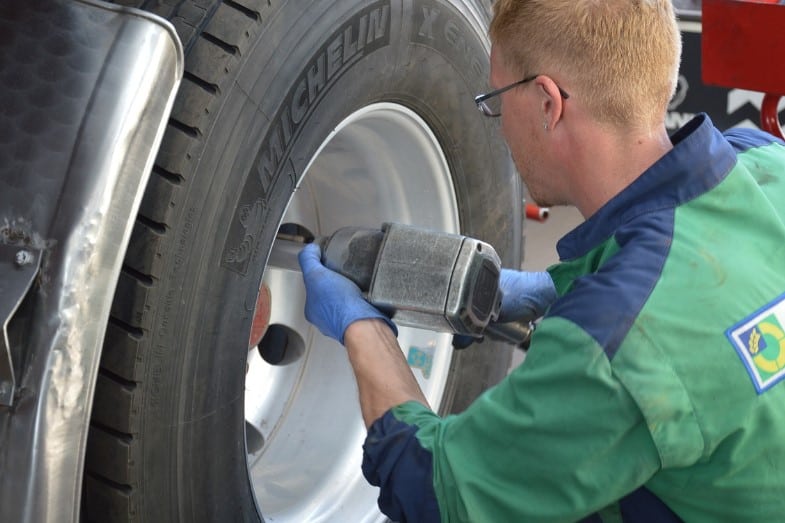 All tires don’t wear evenly due to each one performing a different task. To achieve longer life, you should rotate the tires every 5,000-7,500 miles or 8,000-12,000 kilometers.
All tires don’t wear evenly due to each one performing a different task. To achieve longer life, you should rotate the tires every 5,000-7,500 miles or 8,000-12,000 kilometers.
But how do you rotate radial tires? Keep reading this post to find out.
It is essential to rotate the rites according to the exact tire rotation pattern. By following the proper steps, you can spread tire wear evenly, reduce the risk of tire breakage, and prolong tires’ life.
Start by loosening the lug nuts on all wheels. Next, lift one wheel with a car jack and place the jack stand. If you have two stands, you will spend more time adjusting. If you have four jack stands, you can get the tire rotation done faster.
Remove the tires carefully and rotate them according to the pattern for your tire type. When you place the tire back, screw the lug nuts as hard as you can.
Front and rear tires wear variously. The front tires carry more weight (around 60%) than rear tires, meaning they wear down faster. Also, we turn tires at different rates and speeds. Most people usually take left turns faster than right ones, which puts additional pressure on the front tires, resulting in faster wearing.
Also, we turn tires at different rates and speeds. Most people usually take left turns faster than right ones, which puts additional pressure on the front tires, resulting in faster wearing.
After thousands of miles, the driver ends up with uneven tread wear.
Rotating your tires evens up these tread patterns. When rotating them regularly, you will increase your tires’ performance and ensure yourself a safer ride. It also extends the life of the tires, saving you money and time in the long run.
How do you rotate radial tires? When is the right time to rotate tires? These are the two most common questions drivers want to know the answers to. Knowing how and when to rotate tires will help you maintain your vehicle the right way.
The tire rotation schedule depends on your vehicle, how often you drive it, and the tires’ brand. Low-quality tires require frequent rotation, while high-quality ones are more durable. How many miles should tires be rotated? Most manufacturers recommend rotating the tires every 5,000-7,500 miles. The easiest way to remember is to do it whenever you change the oil.
The easiest way to remember is to do it whenever you change the oil.
If the manual states that your vehicle doesn’t need new oil that frequently, plan on rotating the tires every six months.
Whenever you are rotating tires and wheels, you need the following tools:
While the jack that comes with the vehicle is useful for minor adjustments, it isn’t the most suitable tool for rotating radial tires. The car jack serves to lift the car so you can replace the tire.
Ideally, you should use a hydraulic floor jack. While it is an additional expense, keep in mind the money you’ll save with rotating your own tires. Investing in a high-quality car jack can come in handy for various auto maintenance jobs. Learn how to rotate your tires with one jack.
While you switch your tires out, you will need jack stands to set the vehicle on top of. Ideally, you need four jack stands to quickly and safely change the tires.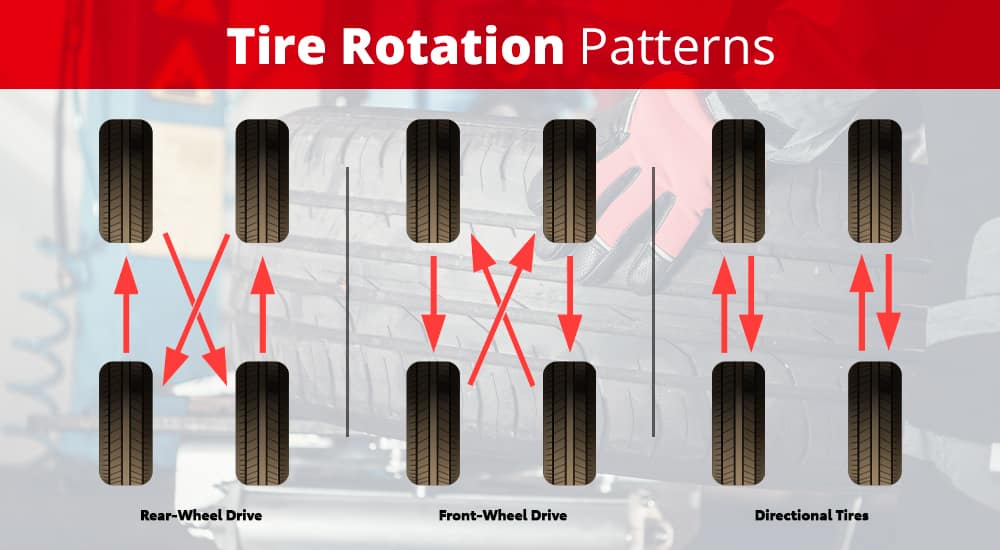
With the torque wrench, you can tighten the lug nuts and make sure they are in place tightly.
Before you put your vehicle on jack stands and start loosening the nuts, you need to know what pattern to follow. The way you rotate radial tires depends on your car’s drive type – front-wheel drive, rear-wheel drive, four-wheel drive, or all-wheel drive. Next, you need to determine the wheel size, tire brand, and whether you have directional or non-directional tires.
For front-wheel drive vehicles such as crossovers and minivans, the X pattern or forward cross pattern rotations are most suitable.
Start the rotation by moving the front wheels to the rear and the rear wheels to the front. Then, switch them so that the right rear is on the left, and repeat the pattern for all four wheels.
Read more: How To Rotate Front Wheel Drive Tires
For rear-drive vehicles, move the rear wheels straight to the front, and then move each wheel to the opposite corner (move the right front to the left rear).
For four-wheel and all-wheel-drive vehicles, crisscross all tires – move the left front to the right rear, the right front to the left rear, the left rear to the right front, and the right rear to the left front. The X pattern is pretty simple, and once you do it, it will be much easier the next time.
You might be interested in our blog – How To Rotate Tires 4×4
The rotation pattern for non-directional tires means you can move the tire in any direction. The cross pattern is for non-directional tires only.
Directional tires have a limited tread pattern. Therefore, you should rotate them based on their direction – left or ride side of the vehicle. These tires have angled grooves for better handling and do an excellent job carrying water out from under the tire. When rotating directional tires, switch the front right tire for the back right and the front left tire for the back left.
So, how do you rotate radial tires? First, it is essential to determine the tire’s type and follow the pattern. Tire rotation is necessary to maximize tire mileage and achieve even treadwear. It is an inexpensive and quick preventative practice to establish, and once you repeat it a couple of times, you will become an expert at it.
Tire rotation is necessary to maximize tire mileage and achieve even treadwear. It is an inexpensive and quick preventative practice to establish, and once you repeat it a couple of times, you will become an expert at it.
Did you find this article helpful? Then consider checking:
How Long Does It Take To Rotate Tires?
How Much Does Tire Rotation Cost
How To Rotate Tires With TPMS
How To Rotate Tires On AWD
How To Rotate Dually Tires
All tires are divided into several types and types. During manufacture, tires are marked with a marking that indicates its main parameters and characteristics. We will not delve into the markings, but we will consider the main differences. Tires are divided into two large groups according to the way the cord is laid inside the tire during its manufacture.
These are radial tires and bias tires. Tires of these two types can be winter, summer and all-weather. Each of these three tires can have a regular or directional tread pattern.
Each of these three tires can have a regular or directional tread pattern.
A tire with a regular pattern can be installed on either side of the car, a tire with a directional pattern is installed strictly in the direction of rotation. Regular and directional tread patterns can be symmetrical or asymmetrical. A tire with such a pattern is placed according to the rule of a tire with a regular or directional pattern.
It is possible to buy 4 identical tires and assemble them with rims according to the right and left sides of the car. You will get two left wheels and two right ones. Very rarely come across directional tires with an asymmetrical pattern and with an indication of the inside and outside. These tires need to buy two on each side. Two right and two left, but it is better to refuse such tires altogether. They are not convenient to use.
Radial tires are preferable for cord construction. Such tires are more reliable, they withstand heavy loads during movement, and are more stable during deformation.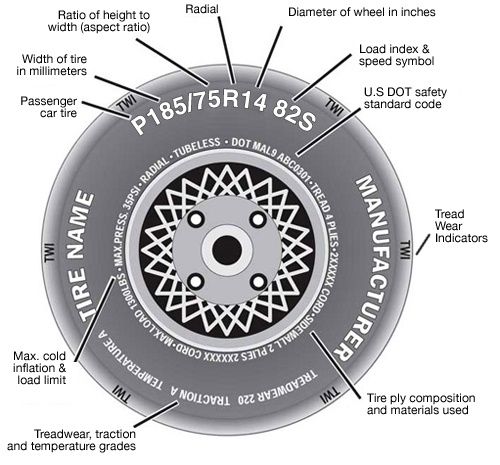 Radial tires wear longer than diagonal tires. Therefore, tires with a diagonal ply are currently practically not produced. Almost all car owners have two sets of tires. For the operation of a car in the winter - these are winter tires, for the summer period - summer.
Radial tires wear longer than diagonal tires. Therefore, tires with a diagonal ply are currently practically not produced. Almost all car owners have two sets of tires. For the operation of a car in the winter - these are winter tires, for the summer period - summer.
All season tires can be used in both summer and winter. Winter tires can be studded. Such tires are allowed only in a few countries, where snow often and abundantly falls in winter, frost forms on the road surface. This list also includes Russia. All-season, summer and winter tires have their own pattern characteristics that increase the car's handling.
Front or rear wheel drive vehicles can be fitted with different tire patterns. Such tires are installed in pairs on one axle, for example, tires with one pattern are in front, and with another in the back. It is forbidden to install diagonal tires on one axle and radial tires on the other. The dimension must be the same. On all-wheel drive vehicles, the same tires must be installed.
Tires with different treads and dimensions are strictly prohibited. This is due to the design of the transmission. If you operate a car with different tires, then the car's transmission will quickly fail. In addition, driving on different tires becomes dangerous, a car on a slippery road will behave unpredictably.
All car and tire manufacturers recommend changing tires while driving. What is it for? During the operation of the car, all tires wear out unevenly. This is due to several factors. Heterogeneity of the road surface, operating conditions and vehicle transmission device. Therefore, in order to extend the life of the tires and the transmission of the car, the tires must be periodically replaced.
On all-wheel drive vehicles, uniform tire wear is more relevant. Car manufacturers recommend several tire rotation schemes. But in practice, as is often the case, it is impossible or impractical to apply such tire swap schemes.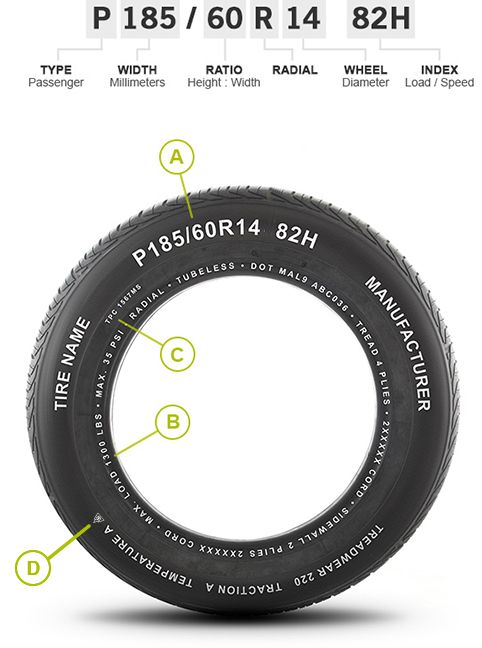 Many car owners never swap tires. Which of course is wrong.
Many car owners never swap tires. Which of course is wrong.
How do you change tires and how often should you do it? The frequency is approximately 8 - 12 thousand kilometers. Therefore, tire swapping can be timed to coincide with the change of tires from summer to winter and vice versa. Winter tires can be studded. When using these tires, the studs tilt to one side. This is due to frequent wheel slip.
Therefore, these tires must be installed in the same direction as they were before. In this case, the tires from the front axle must be put on the rear axle, and the tires from the rear axle should be put on the front axle. In order not to get confused where which wheel was, in a tire shop, the master usually puts a mark on the wheel. If you apply one of the recommended schemes and change the direction of rotation to the opposite when installing the tires, the spikes will begin to tilt in the other direction, their fastening in the tread will weaken and they will start to fly out.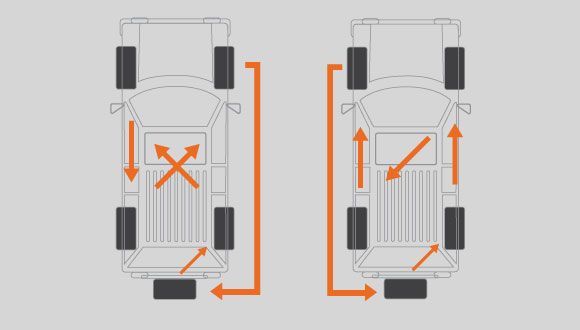
Which, of course, does not justify the expediency of rearranging the tires strictly according to the scheme. There is no point in this, the tires will wear out evenly, but the spikes will almost all fall out. If the tires are not studded, but have a directional pattern, the tires must also be rearranged, from the front axle to the rear, from the rear axle to the front, without changing the installation side on the car. If the tires do not have a direction of rotation, then it is possible to apply a more complex scheme.
In this case, the rear tires are moved to the front axle in accordance with the sides. And the front tires are placed on the rear axle, but at the same time the right wheel is placed on the left, and the left wheel is placed on the right. There is another scheme for rearranging wheels. In this scheme, a spare wheel is also involved. The spare must of course be identical. When using such a scheme, the tires wear out a little longer during operation. In this case, the rear tires are rearranged to the front axle without changing sides, the spare wheel is placed on the rear axle on the right, and the right front wheel is placed back on the left. The front left wheel becomes a spare. But such a scheme can be applied if non-studded tires and tires with a non-directional pattern are installed on the car.
In this case, the rear tires are rearranged to the front axle without changing sides, the spare wheel is placed on the rear axle on the right, and the right front wheel is placed back on the left. The front left wheel becomes a spare. But such a scheme can be applied if non-studded tires and tires with a non-directional pattern are installed on the car.
If the vehicle is fitted with all-season tyres, it is best to change the tires in the middle of the season. That is, in summer and winter, and not during periods of changing seasons. And it turns out that some wheels constantly "ride" on the snow in front, and the other pair - on asphalt in the summer on the rear axle. Wear will again be uneven. When using a rearrangement scheme without the participation of a spare tire, the latter does not wear out. There is a situation when you have to put a spare tire on the car and drive it.
The difference between the tread height of the worn tires and the spare wheel adversely affects the vehicle's transmission. But you can still drive several tens of kilometers. It is advisable to drive as short a distance as possible using the spare wheel.
But you can still drive several tens of kilometers. It is advisable to drive as short a distance as possible using the spare wheel.
It happens that a car owner has two sets of fully assembled wheels. That is, when replacing tires, you do not need to constantly bead tires. You just need to change the wheels, for example, from winter to summer. Before changing wheels, they must be balanced. Which will also increase their service life, as well as the service life of the car suspension. Many car owners balance their wheels only when replacing tires with new ones and then drive their entire life. It is not right. During tire wear, the point of imbalance changes. During wheel spin, for example in deep snow, the weight on the disc may move. Therefore, it is necessary to balance the wheels periodically.
For one reason or another, your car ended up with different wheels. How will this affect the actual behavior of the car? And what does the SDA say about this?
The tale of different wheels is familiar to many of us from childhood.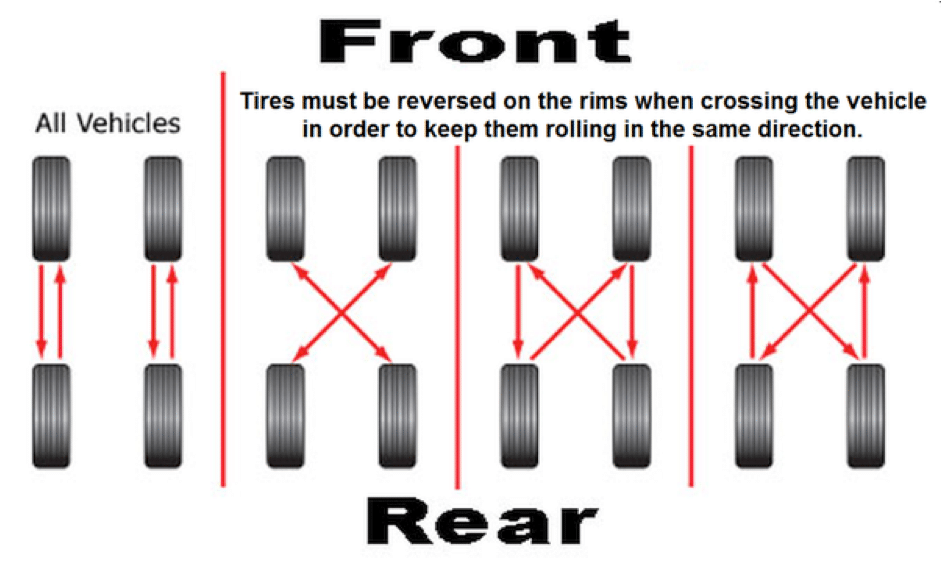 Remember, there a cart with different wheels turned out to be an unusable vehicle, and therefore was abandoned in the forest? It is understandable: almost always different wheels are put out of hopelessness.
Remember, there a cart with different wheels turned out to be an unusable vehicle, and therefore was abandoned in the forest? It is understandable: almost always different wheels are put out of hopelessness.
Disapproved of a vehicle with different wheels, even in children's literature.
Disapproved of a vehicle with different wheels, even in children's literature.
Related materials
What if you put bigger wheels? — expert examination of the ZR
First, let us recall how the law applies to different wheels. The booklet with the Rules of the Road is always accompanied by the "List of malfunctions and conditions under which the operation of vehicles is prohibited" at the back. It lists the shortcomings of cars with which their long-term operation is prohibited. With them, you will not be able to get a diagnostic card necessary for issuing an OSAGO policy.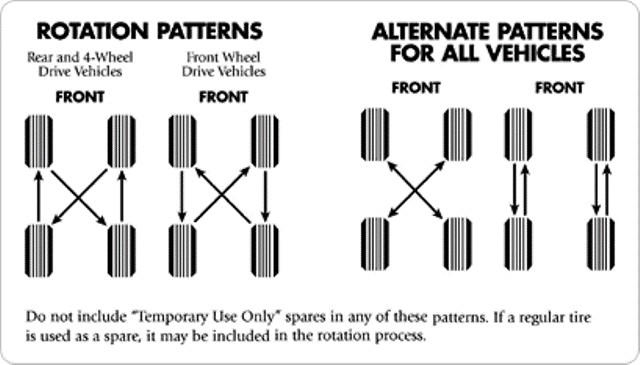 But you can get to a parking or repair place with all the disadvantages listed below. Is there a mention of wheels?
But you can get to a parking or repair place with all the disadvantages listed below. Is there a mention of wheels?
Reading. Operation is prohibited if:
"one axle of the vehicle is fitted with tires of different sizes, designs (radial, diagonal, chamber, tubeless), models, with different tread patterns, frost-resistant and non-frost-resistant, new and retreaded, new and with deep tread pattern . The vehicle is fitted with studded and non-studded tires."
So far everything is clear. Both by the rules and by common sense, it is quite obvious that wheels and tires on the same axle should be the same. But this idyll is often broken... by installing a spare tire. Of course, if there is a full-size wheel in the trunk, then nothing will change, but, unfortunately, there are other options. Namely:
you have a summer spare tire, but it is winter and you have winter wheels installed
your car has a spare wheel that is smaller than the rest of the wheels
We have already talked about dokatka in more detail earlier.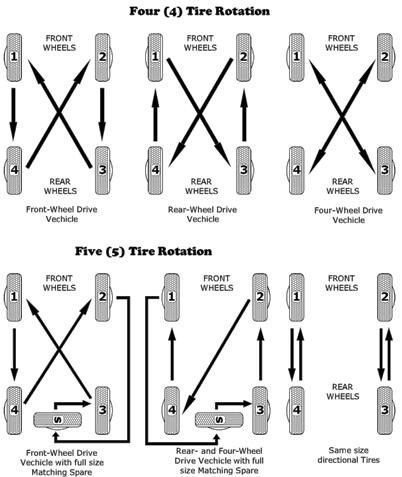 According to the law, they can only be driven to a parking or repair site. It goes without saying that at the same time you need to keep the speed no higher than 80 km / h and be especially careful.
According to the law, they can only be driven to a parking or repair site. It goes without saying that at the same time you need to keep the speed no higher than 80 km / h and be especially careful.
After installing the stowage, the wheels are definitely different. Only caution will keep you out of trouble.
After installing the stowage, the wheels are definitely different. Only caution will keep you out of trouble.
Different wheels on the front and rear axles are often put on assembly lines producing rear-wheel drive cars, from the smallest smart fortwo type to such as the sported Mercedes-Benz, BMW and some others.
There are different wheels "in law".
Here are different wheels "in law".
It is believed that in order to transmit high torque from the engine, it is better if the rear wheels are wide.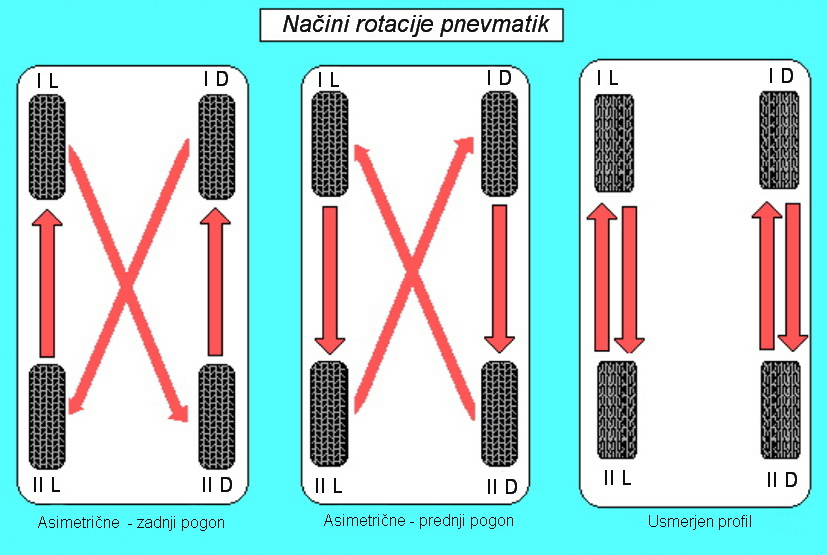 The experience of sports cars was adopted by quite civilian cars. For example, a Mercedes-Benz C-class of the previous generation, even with the simplest engine of 156 hp. could be equipped with tires 225/45 R17 at the front and wide 245/40 R17 at the rear. Well, such a solution has the right to exist, but just don't forget that even a full-size spare tire on an alloy wheel in the mentioned "shop" in the trunk has the same dimension as on the front axle. In which case, the incident comes out!
The experience of sports cars was adopted by quite civilian cars. For example, a Mercedes-Benz C-class of the previous generation, even with the simplest engine of 156 hp. could be equipped with tires 225/45 R17 at the front and wide 245/40 R17 at the rear. Well, such a solution has the right to exist, but just don't forget that even a full-size spare tire on an alloy wheel in the mentioned "shop" in the trunk has the same dimension as on the front axle. In which case, the incident comes out!
Four-wheel drive vehicles always roll out of the assembly line on exactly the same wheels. Features of the all-wheel drive transmission require the symmetry of all four wheels.
You may need a spare tire in the desert, and God forbid that it turns out to be the right size.
A spare tire may be needed in the desert, and God forbid that it turns out to be the right dimension.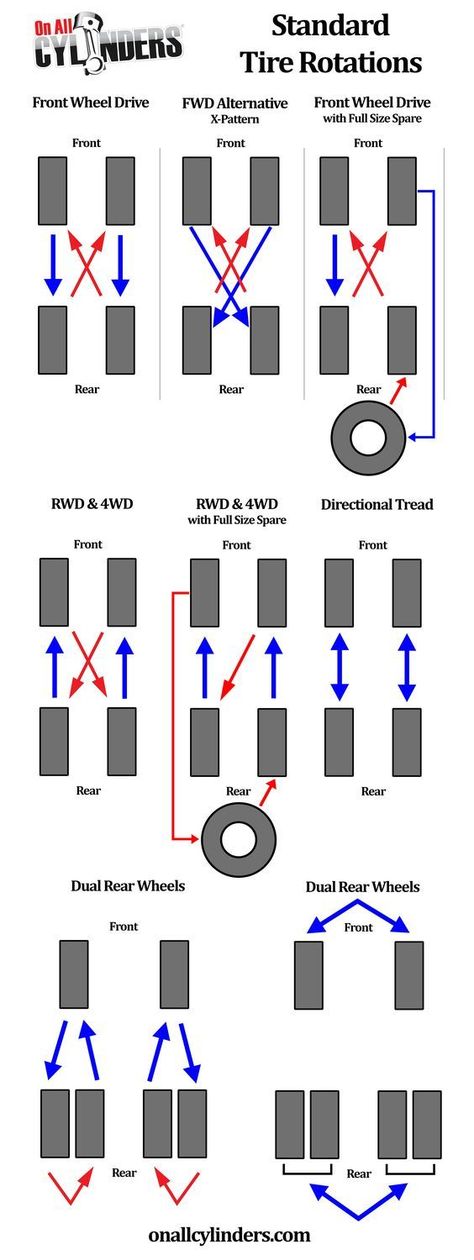
In a scheme with a symmetrical center differential (for example, Chevrolet Niva), wheels of different sizes will cause its constant rotation and, accordingly, wear. The "brains" of modern complex and sophisticated crossovers will also not be happy with the wheels rotating at different speeds. And cars with a hard-wired front axle will completely break the transmission by circulating parasitic power, as well as wear out tires.
The richer the country, the less likely it is to have “different wheels”. And winters are rare here...
The richer the country, the less likely it is to have "different wheels". Yes, and winters are rare here ...
On a relatively inexpensive Hyundai Creta crossover in a mono-drive version, the tire pressure monitoring system reacts very sharply to the movement of a car with frequent slips. Even with absolutely equal pressure in four identical tires, it periodically starts to sound a false alarm.
On such roads, even with the same wheels, the car constantly asks to check the tire pressure.
On such roads, even with the same wheels, the car constantly asks to check the tire pressure.
You understand what will happen if you put at least slightly different wheels on the front and rear axles. The same can be said about other systems that compare wheel speeds. On any modern car, ESP will simply "go crazy" if wheels of a different size are put on the car.
Related materials
If I change wheels, do I need to balance them every season?
Wheels of slightly different sizes can only be fitted to simple front- and rear-wheel drive vehicles with, at most, an ABS system or none at all. Moreover, this can be done only if necessary to hold out until the end of the season. For example, they stole two wheels from you, and only managed to get an adjacent dimension. But no car should be operated constantly in this mode.
But no car should be operated constantly in this mode.
It also happens that if one of the four tires is fatally damaged, it is not possible to purchase the same one. For example, due to the removal of this model from production or because stores most often import and sell tires in pairs at best. Here you can be advised to look for the same used tire, or buy two new tires of the same dimension. The advice is only suitable for 2-wheel drive vehicles. It is best to purchase a pair of the same manufacturer as it was before, and as close as possible in terms of tread pattern. At the same time, a new pair should be put on the front axle, regardless of the type of drive.
A simple vehicle with a not very powerful engine - and different wheels are acceptable.
A simple vehicle with a not very powerful engine - and different wheels are acceptable.
The regulations do not prohibit the installation of winter studless wheels on one axle and summer wheels on the other throughout the year, except for three winter months.